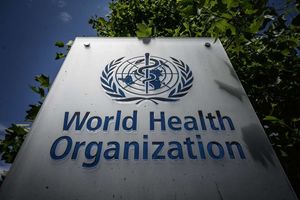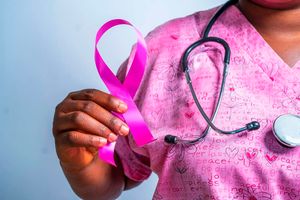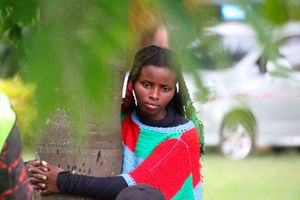Kenya among six countries on the brink of running out of HIV drugs
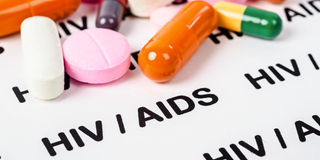
Kenya is among the top four countries in Africa with the highest HIV/Aids burden.
What you need to know:
- On Friday last week, Health Cabinet Secretary Deborah Barasa flagged off a consignment carrying 510,000, 100-ml bottles of Nevirapine Suspension, an ARV used in infants to protect them from being infected by their HIV-positive mothers.
- Dr Barasa also announced that the health ministry has secured stock for testing kits, TLD first-line HIV medication, various HIV testing commodities, early infant diagnosis, viral load testing reagents, and condoms.
Kenya is among six African countries at risk of running out of HIV drugs following the recent decision by the US government to pause foreign aid, the World Health Organization (WHO) has warned.
The other affected countries are Nigeria, Lesotho, South Sudan, Burkina Faso, and Mali.
According to WHO, approximately 25 million people in sub-Saharan Africa are living with HIV, with Kenya ranking seventh globally in the visus prevalence, with around 1.4 million people affected.
According to 2023 data from the National AIDS and STI Control Programme, new HIV infections continue to be common among female sex workers (29.3 per cent), men who have sex with men (18.2 per cent) and people who inject drugs (18.3 per cent).
In 2023, 1.4 million Kenyan adults and 71,433 children were living with HIV.
WHO chief Tedros Adhanom Ghebreyesus stated that the funding cut and suspension of funding to the President’s Emergency Plan for AIDS Relief (PEPFAR) caused an immediate stop to services for HIV treatment, testing and prevention in more than 50 countries.
Dr Tedros also warned that the disruption “could undo 20 years of progress, leading to more than 10 million additional cases of HIV and three million HIV-related deaths – more than triple the number of deaths last year.”
“We ask the US to reconsider its support for global health, which not only saves lives around the world, it also makes the US safer, by preventing outbreaks from spreading internationally. If the US decides not to restore direct funding to countries, we ask it to engage in dialogue with affected countries so plans can be made to transition from reliance on US funding to more sustainable solutions, without disruptions that cost lives,” said Dr Tedros.
The WHO boss called on other donors and countries reliant on US funding to “step up.”
A February report by UNAIDS stated that Kenya may experience erratic supply of Nevirapine syrup and Dolutegravir (DTG) 50 mg towards the end of March and May 2025, respectively, if the stop work order is not lifted.
UNAIDS also warned that the stocks for DTG 10 mg that was then available at Kenya Medical Supplies Authority (KEMSA) would not sustain the country beyond June 2025. Nevirapine Suspension is an ARV used in infants to protect them from being infected by their HIV positive mothers.
Dolutegravir is an oral antiretroviral medication used together with other medication, to treat HIV/Aids. It may also be used, as part of post exposure prophylaxis, to prevent HIV infection following potential exposure.
“Viral load and EID products are mainly procured through PEPFAR support. This will be adversely affected if the stop order is not lifted as soon as possible as the quantity under the Global Fund is minimal, targeting specific point of care testing sites,” said the report.
On Friday last week, Health Cabinet Secretary Deborah Barasa flagged off a consignment carrying 510,000, 100-ml bottles of Nevirapine Suspension, an ARV used in infants to protect them from being infected by their HIV-positive mothers.
Dr Barasa also announced that the health ministry has secured stock for testing kits, TLD first-line HIV medication, various HIV testing commodities, early infant diagnosis, viral load testing reagents, and condoms.
She announced that KEMSA and MEDS Centre, the government’s stockhouse, currently have a total of 2,026,555 packs of Tenofovir/Lamivudine/Dolutegravir (TLD), which are the main anti-retroviral drugs used by over 92 per cent of patients (both adults and children).
TLD, short for Tenofovir/Lamivudine/Dolutegravir, is a highly effective, single-pill-a-day antiretroviral therapy (ART) drug for both first-line and second-line treatment of HIV, which provides rapid viral suppression.
“Over 4.8 million packs will be delivered between now and June 2025, which will increase Central-level stocks to over 11 months of stock by the end of June, 2025,” said Dr Barasa.
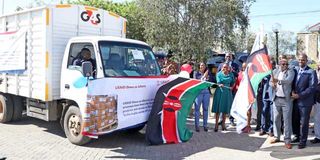
Cabinet Secretary for Health Deborah Barasa (second from left) and Kenya Medical Supplies Authority CEO Waqo Ejersa (second from right) flag off the Antiretroviral Drugs (ARVs) consignment at the MEDS Centre in Nairobi on March 14, 2025.
She said over 326,000 packs of Abacavir/Lamivudine 120/60 mg dispersible tablets, used alongside Dolutegravir 10 mg dispersible tablets as first-line ARV in pediatric patients, are in stock.
First-line medications are the initial drugs prescribed to a person newly diagnosed with HIV in order to suppress the viral load to undetectable levels. Deliveries of the drug would begin in June onwards.
She announced that there are currently a total of 9,244,645 commodities to test and confirm HIV status of individuals are stocked at KEMSA and MEDS Centre. There are also an additional 1,483,125 tests of the HIV/Syphilis duo test kit that is used for screening pregnant mothers living with HIV, to prevent mother-to-child transmission.
Also in stock, announced Dr Barasa, are 18,432 tests that are used to check whether infants have been exposed to HIV, with MOH expecting delivery of 52,608 tests by April 2025. 446,436 viral load tests are also in stock. These are used to confirm whether infants have been infected with HIV.
However, the consignment didn’t include post-exposure prophylaxis (PEP) drugs and (pre-exposure prophylaxis) Prep.
PEP refers to taking a course of antiretroviral medications after a potential HIV exposure to prevent infection, and it must be started within 72 hours of the exposure. In discordant couples (where one partner has HIV and the other does not), PrEP is used by the HIV-negative partner to prevent HIV transmission, particularly when the HIV-positive partner isn't on effective ART or has not achieved viral suppression.
According to MEDS Centre CEO, Dr Wycliffe Nandama the Centre “does not deal with any products that are family planning related.”
CS Barasa said that they had secured stock of 1.6 million male condoms.
She added that an additional 93 million pieces is under procurement at KEMSA.
According to the National Syndemic Disease Council, Kenya has an annual condom demand of 400 million pieces annually.
This translates to about 1,095,890 daily condom demand. With the total figure shared by CS Barasa coming to 131.6 million, it would mean that Kenya will run out of condoms within 120 days.
The US Government was directly supporting 40,608 staff across 40 counties, except Isiolo, Garissa, Mandera, Lamu, Tana River, Marsabit, and Wajir. Following the withdrawal, a total of 1.4 million patients living with HIV across the 40 counties will be impacted, with a total loss of Sh20,447,225,726.
The financial impact left by the United States Government order, amounting to Sh30.922 billion, affected staff helping in HIV services (Sh5.8 billion), tuberculosis (TB), malaria health products and technologies (Sh12.26 billion), other health products and technologies including medical oxygen, laboratory, and cervical cancer (Sh3.7 billion), and country distribution costs of commodities supported by the US government (Sh2.26 billion).
Kisumu, Homa Bay, and Migori counties, which bear the highest burden of people living with HIV, were impacted, with the withdrawal affecting a total of 351,339 people living with the condition, needing a total of about Sh5.27 billion. These three counties are now calling on the national government to increase their allocations in the next financial year.
In a joint meeting between the Council of Governors, Ministry of Health, National Syndemic Diseases Control Council, National Aids, STI Control Programme (NASCOP), and the National Assembly Health Committee, it was resolved that county governments would receive an additional Sh5.24 billion this financial year, drawn from the emergency fund, while an additional Sh13.54 billion would be allocated from the 2025/2026 financial year.
The additional funds would cater for payment of staff, vaccines, HIV commodities, and health management systems.
The Sh5.24 billion will be used immediately to distribute PEPFAR procured commodities (Sh1.2 billion), maintain current 11,059 frontline healthcare workers (Sh3.9 billion) and maintenance, software licenses and updates, system support, including personnel (Sh140 million)

